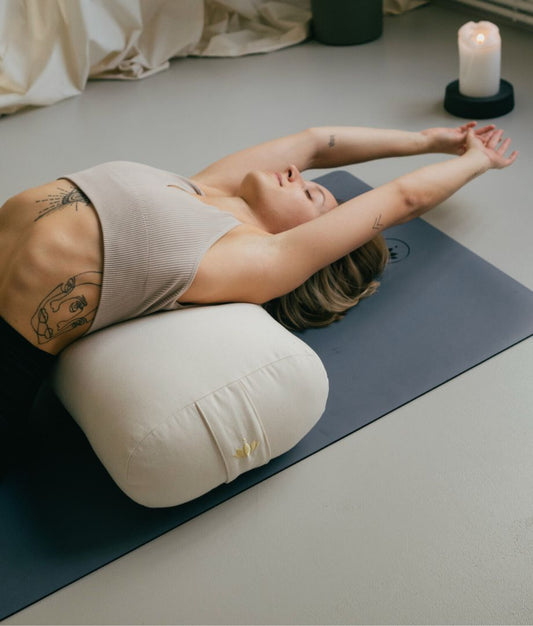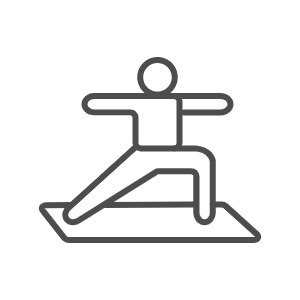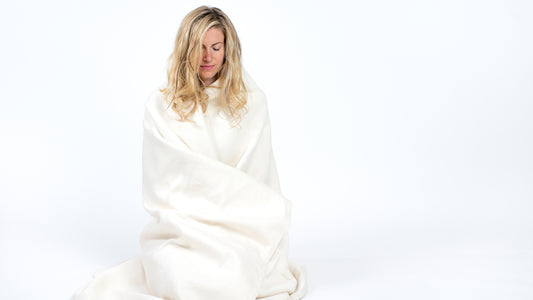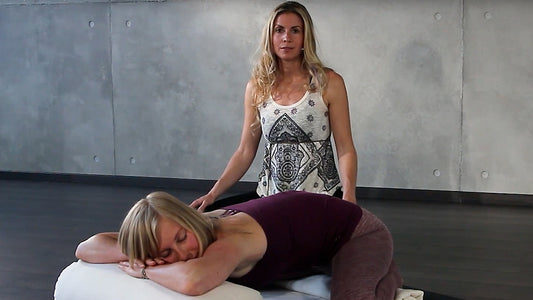
Set-Offers
Save when you buy a set
Shopping cart
Your shopping basket is empty
Yoga

Meditation
Bundles

| Achtsamkeit
Helga Baumgartner, Yin Yoga teacher and author, has summarized her thoughts on Yin Yoga in a wonderful article for us and calls for more "Yin" for all of us!
For decades, our lives have become increasingly “yang”-heavy due to more pressure to perform, more speed, more mobility, more stress and constant availability. The yoga asana practice, which the first travelers to India brought to the West from the 1970s, was rather dynamic and powerful. Although the quieter Hatha Yoga has been very popular in the last 50 years, the general public was enthusiastic about the Ashtanga and Vinyasa revolution, the sweaty and toning yoga. For a long time, this intensive asana practice offered people a wonderful counterbalance to the constant sitting at a desk or in the car. Movement to balance was demanded and also necessary. And she still is! We should and want to move - even with the growing mental illnesses of our time, many therapists ask their clients to exercise and do sports as a supplement to therapy.
But more and more people don't just need physical balance - they begin to suffer mentally from this speed. Symptoms of stress already appear in childhood and just as children are overwhelmed, so are young adults. For three years I have been teaching sports and teaching students, as part of a teaching assignment at the University of Regensburg, in mindfulness through yoga and meditation. The feedback from the students is clearly in one direction: everyone is looking for methods and tools that will help them manage stress and give them a way to withstand the increasing pressure on them.

This development of society explains the growing desire for a quiet yoga practice with more "Yin" - always as a complement to our Yang practice. Yin Yoga is what we need more than ever! As a physical balance, but much more as a mental and emotional balance to our excessively fast life. The time has come for more yin, more pauses, more rest, more withdrawal and more letting go. Because when we are in optimal condition, our yin and yang are balanced, only then can well-being develop in our body, stillness, clarity and peace in our mind and harmony in our emotions.
This trend in the development of society is accompanied by a second trend. Many yoga practitioners who devote themselves to asana practice begin by learning the basic postures, gradually developing a feel for the body, breathing, and learning to relax. Once the basics are in place, curiosity often arises and the search for more follows. The students feel ready to practice more strenuously, put out feelers, try out many things - now the time for dynamic, powerful practice begins! Many find their own style that accompanies them throughout their lives.
However, after a few years of vigorous practice, many asana practitioners also desire more gentle yoga practice. A practice that is not quite as still as just sitting meditation, which still brings the body into postures and openings, but allows for more relaxation and a longer dwelling in the postures. A practice for the times in our lives when our everyday life is very yang-heavy. Times when we are physically, emotionally or mentally exhausted, wish for more space for ourselves and want to release physical tightness and inner tension. This tension often arises from the conflict of wanting or needing to fulfill many roles at once - the role of partner, parent or child, boyfriend or girlfriend, dutiful worker, disciplined devoted yogi, volunteer worker, helpful fellow citizen, as a mindful earthling and much much more. The times when a yoga practice offers more balance for us when it is yin oriented.
For me, too, the focus of my yoga practice at the beginning was learning the basics, which in my case first meant years of mindfulness meditation, autogenic training and then six years of very mild Hatha Yoga. After that came a wild phase of getting to know Ashtanga Vinyasa and finally, ten years ago, Yin Yoga came into my life. This practice was pure "enlightenment" for me, as it combined the tranquility of meditation with the opening of the body from the individual yoga postures - perfect!

The practice of Yin Yoga became my personal declaration of love to my body, I began to feel more and more into myself. Before, there was no choice for me: I “had” to start with 90 minutes of powerful yoga practice every day. For several years I have allowed myself the freedom to feel myself first. Is today a day when my body desires yang yoga, or is today more of a yin day for me? At first, I was also enthusiastic about Yin Yoga, how much this practice improved my mobility, how much better I was able to meditate through the practice, since my body was suddenly less tense when sitting. After more than a decade of Yin Yoga practice, my perspective on it has fundamentally changed.
The potential of Yin Yoga is far greater than the physical effects of opening and relaxing the body. The true healing power of Yin Yoga lies in deceleration, in acceptance, in the practice of loving compassion, the practice of mindfulness. At some point in our yoga practice, we hope to reach the point where we realize that the time for fighting is over. I want to do something good for myself in my yoga practice, accept myself as I am, accept my body and also accept the current situation as it is. Only this acceptance allows us to let go of the inner tension that may have always accompanied us up to now. It melts away under acceptance. What is taking place now is healing. On a deep physical, emotional and psychological level. To make this possible, I now practice and teach Yin Yoga much more gently than I did several years ago. My hope is that through good adjustment and support in the postures, everyone will find their own limit and form in which it is possible to let go on all levels. On the level of the body, the psyche and the emotions.
A nice quote on this comes from one of my teachers and mentors, Biff Mithoefer :
“From acceptance comes equanimity, and from equanimity comes compassion, loving kindness, and well-meaning joy.”
Yin Yoga is by no means a new practice! The ancient scriptures attest that there has always been a yin and a yang in asana practice. Even in the early 70's it was clear that yoga should be practiced with relaxed muscles. In particular, the muscles in the areas that were just being stretched should be completely relaxed, according to André Van Lysebeth or Lucy Lidell, western yoga experts of the time. That's why Yin Yoga is not a trend, not a passing fad, but a yoga that has always existed. Like the ha and the tha, sun and moon, yin and yang. And it's a yoga that gives us time to breathe deeply.
So now and for everyone: more Yin, please!

In this video, Yin Yoga teacher Helga Baumgartner explains the Frog position, a kneeling, harmonizing forward bend to open the inside of the legs. ...
Continue readingThoughts control the body - this has already been proven by many scientific studies. Through meditation we can reach a state of consciousness that ...
Continue reading
There are no comments yet. Be the first to leave a comment!